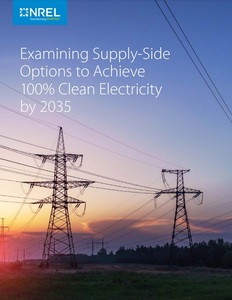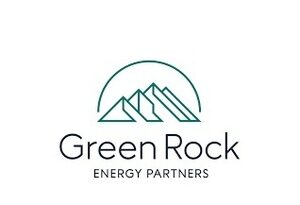NREL study highlights emissions reduction potential of BECSS
Energy Disrupter
ADVERTISEMENT
The U.S. Department of Energy on Aug. 30 released a report by the National Renewable Energy Laboratory that examines the types of clean energy technologies and the scale and pace of deployment needed to achieve a net-zero power grid in the U.S. by 2035. Bioenergy carbon capture and storage (BECCS) is among the technologies addressed in the report.
In its report, NREL evaluates four primary scenarios that represent a range of uncertainties and themes. Under the “all options” scenario, all technologies continue to see improved cost and performance consistent with NREL’s annual technology baseline. The “all options” scenario is the only scenario that includes the development of direct air capture (DAC) technology. The other three main scenarios assume DAC does not achieve the cost and performance targets needed to be deployed at scale.
The “infrastructure renaissance” scenario assumes improved transmission technologies as well as new permitting and siting approaches that allow greater levels of transmission deployment with higher capacity. Under the “constrained” scenario, constraints to deployment of new generation capacity and transmission limit the amount that can be deployed and increase the costs to deploy certain technologies. Finally, the “no CCS” scenario assumes carbon capture and storage (CSS) technologies to not achieve the cost and performance needed for cost-competitive deployment.
NREL estimates that BECCS using woody biomass produces net negative emissions of approximately -1.2 metric tons per megawatt hour (MWh). The agency explains that BECCS results in a net-negative emissions rate because carbon from the atmosphere is captured during photosynthesis and then sequestered after combustion.
The report indicates that the future cost and performance of BECCS, CSS and DAC are highly uncertain given their low levels of current deployment. For BECCS, NREL assumes the use of wood biomass fuel that requires minimal processing, with a total availability of 105 million dry metric tons per year in the “all options” and “infrastructure renaissance” scenarios. The assumed availability of woody biomass is halved in the “constrained” scenario. In all scenarios, biomass-based fuel sources, such as crops, are assumed to be reserved for other applications, such as transportation fuels and chemical feedstocks.
Three of the four main scenarios allow deployment of fossil CCS or BECCS starting in 2026. According to NREL, even a small amount of negative emissions DAC for BECCS capacity can support a much larger amount of non-CCS fossil capacity used infrequently for peaking capacity. The “constrained” scenario assumes approximately 7 gigawatts (GW) of BECCS capacity, with the “infrastructure renaissance case” assuming 14 GW of BECCS capacity. Under these scenarios, BECCS offsets the emissions of 250-375 GW of fossil (without CCS) capacity. NREL explains that “BECCS acts as capacity ‘multiplier,’ allowing a greater capacity of combustion turbines without CCS operating at low capacity factors.”
Drax Group plc called the NREL report “very significant policy progress for BECCS in the U.S.”
“The evidence couldn’t be any clearer – only through deploying BECCS at scale can the United States cut its carbon emissions while simultaneously benefitting from reliable, homegrown renewable power to strengthen its energy independence,” said Will Gardiner, CEO of Drax.
“BECCS is vital because it can produce reliable renewable power whilst also permanently removing carbon dioxide from the atmosphere – no other technology does both.
“Drax is the world’s leader in developing power BECCS, having been the first company in the world to capture carbon dioxide from purely biomass combustion,” he continued. “We have been making very encouraging progress towards in delivering BECCS in North America and progressing with site selection, government engagement and technology development
“With the right support from governments, such as the increase in the level of support for carbon removal projects in the Inflation Reduction Act, we stand ready to invest billions in deploying BECCS at scale across the globe to cut carbon emissions and generate renewable power for millions of homes and businesses,” Gardiner added.
A full copy of the report can be downloaded from the NREL website.















